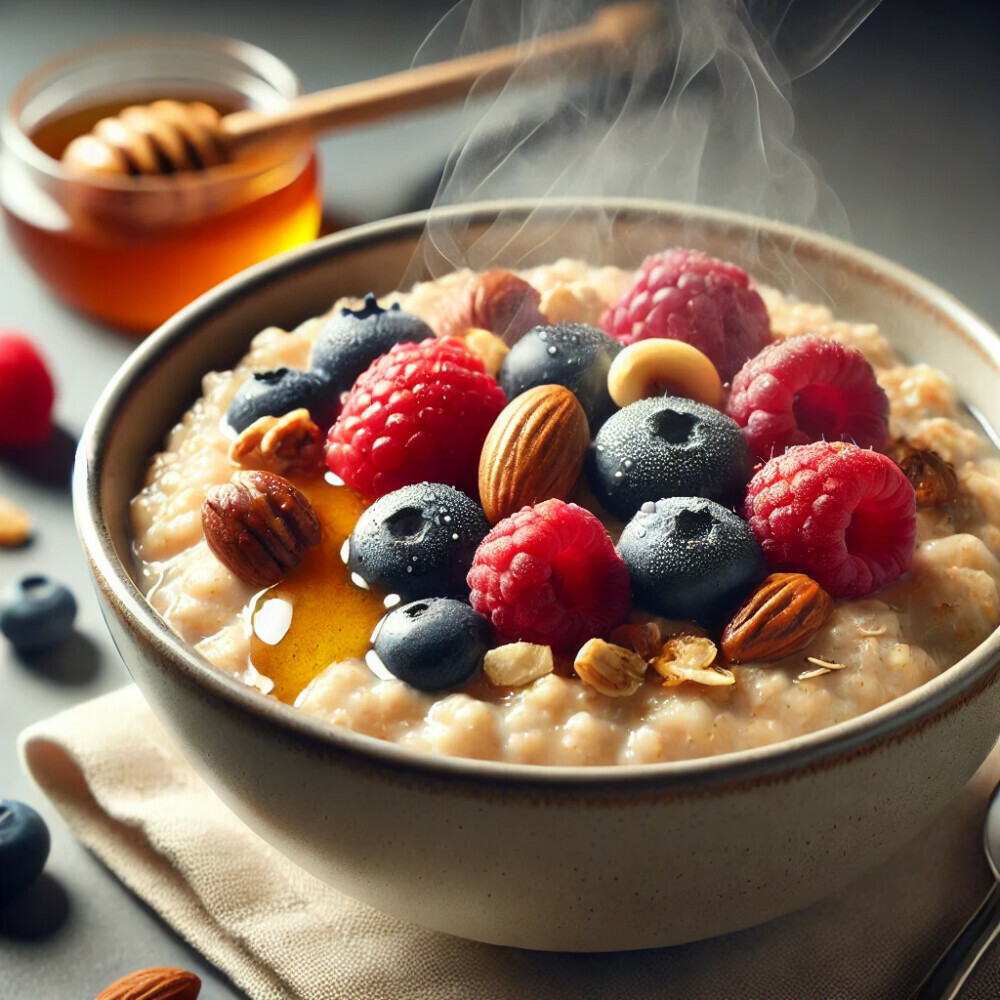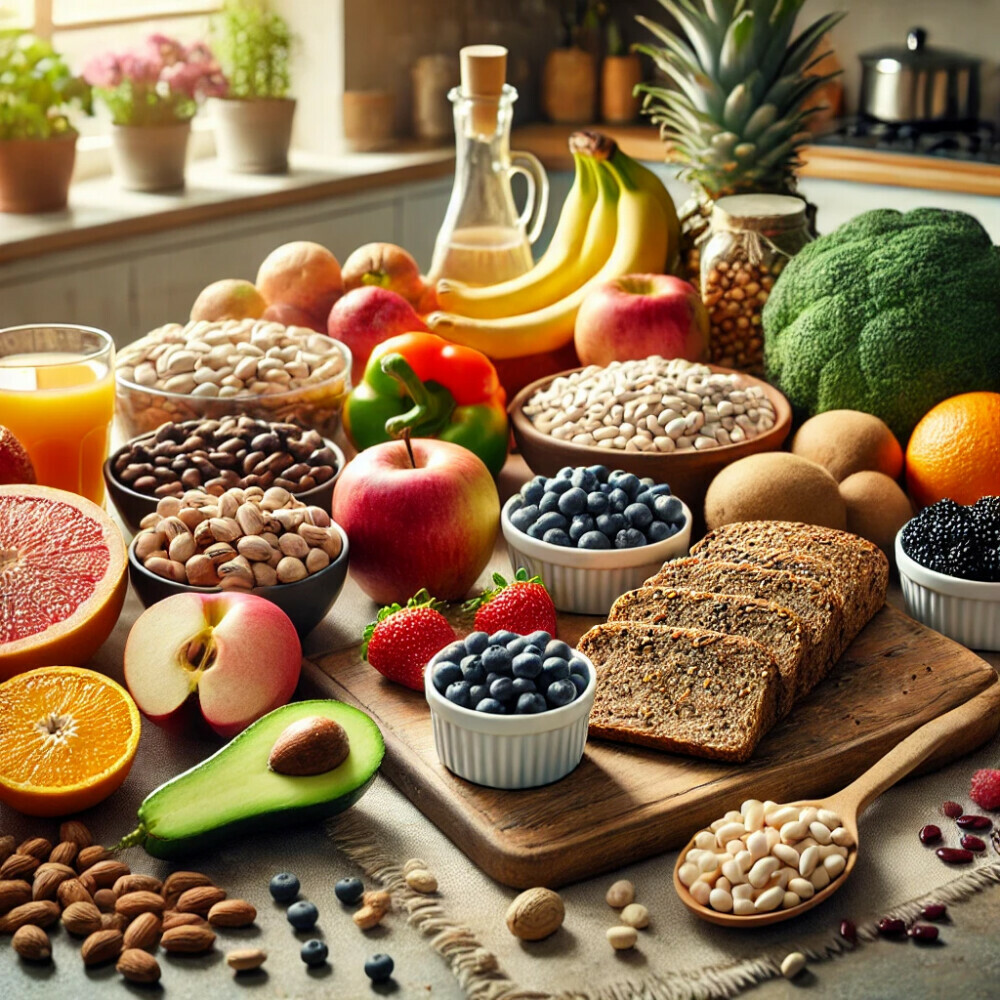Understanding Type 2 Diabetes and Dietary Fiber
Explanation of Type 2 Diabetes – Its Impact on Glucose Metabolism

If you are reading this post, you are probably well aware of what Type 2 diabetes is. But we can always learn from repetition. So Type 2 diabetes is a condition where the body’s ability to regulate glucose levels is impaired. This happens because either the body doesn’t produce enough insulin, or the cells become resistant to insulin’s effects. Insulin is crucial because it helps glucose enter cells, where it’s used for energy. When this process is disrupted, glucose accumulates in the bloodstream, leading to high blood sugar levels. Over time, this can cause various complications, including nerve damage, cardiovascular issues, and kidney problems.
Role of Diet in Managing Type 2 Diabetes
Diet plays a pivotal role in managing type 2 diabetes. What we eat directly influences our blood sugar levels. A well-planned diet can help keep these levels within a healthy range, preventing spikes and dips. It’s not just about avoiding sugar but about incorporating foods that support stable glucose levels and overall health.
Sometimes it doesn’t seem to matter what I eat or even don’t eat my blood glucose is affected. We’re going to talk about some good tasting food in another article because these “diabetes-friendly” foods sometimes are downright disgusting (at least to me they are!).
Defining Dietary Fiber – Soluble and Insoluble Fiber

Dietary fiber is a type of carbohydrate that the body can’t digest. It’s found in plant-based foods like fruits, vegetables, whole grains, and legumes. There are two main types of fiber: soluble and insoluble. Soluble fiber dissolves in water, forming a gel-like substance that can help lower blood cholesterol and glucose levels. Insoluble fiber, on the other hand, doesn’t dissolve in water. It adds bulk to the stool and aids in digestion by preventing constipation.
General Benefits of Fiber for the Human Body
Fiber offers numerous benefits beyond blood sugar management. It promotes healthy digestion, helps maintain a healthy weight, and can reduce the risk of developing certain chronic diseases. By adding bulk to the diet, fiber makes you feel full longer, which can aid in weight control. It also supports heart health by helping to lower cholesterol levels.
The Impact of Fiber on Blood Sugar Levels
One of the most significant benefits of fiber for individuals with type 2 diabetes is its ability to influence blood sugar levels. Fiber slows down the digestion process, which in turn slows the absorption of sugar into the bloodstream. This gradual release of glucose helps prevent the spikes in blood sugar that can be harmful over time.
How Fiber Slows Down Digestion and Affects Blood Sugar
When you consume fiber, especially soluble fiber, it slows down the digestion of carbohydrates. This slower digestion means that sugar enters the bloodstream more gradually, preventing sharp increases in blood glucose levels. This steady release helps maintain more consistent energy levels and reduces the strain on the pancreas to produce insulin.
Studies Showing the Relationship Between Fiber Intake and Glycemic Control
Numerous studies have demonstrated the positive effects of fiber on glycemic control. For example, research has shown that high-fiber diets can lower HbA1c levels, which is a measure of long-term blood glucose control. Another study found that individuals who consumed a diet rich in whole grains and other fiber-rich foods had better blood sugar control than those who consumed a diet low in fiber.
The Role of Soluble Fiber in Regulating Blood Glucose Levels
Soluble fiber, found in foods like oats, beans, apples, and carrots, is particularly effective in regulating blood glucose levels. It forms a gel-like substance in the gut that slows down the digestion and absorption of carbohydrates. This not only helps in maintaining steady blood sugar levels but also improves overall glycemic control, making it easier to manage type 2 diabetes.
Personal Testimonies from Individuals with Type 2 Diabetes Benefiting from High-Fiber Diets
Many individuals with type 2 diabetes have shared their positive experiences with high-fiber diets. For instance, one person noted that after increasing their intake of fruits, vegetables, and whole grains, they noticed a significant improvement in their blood sugar levels and overall energy. Another individual found that adding more beans and legumes to their diet helped them feel fuller longer and reduced their need for snacks between meals.
Incorporating Fiber into a Diabetes Management Plan
Adding fiber to your diet doesn’t have to be difficult. There are plenty of delicious, fiber-rich foods to choose from. Whole grains like brown rice, quinoa, and oatmeal are excellent choices. Fruits such as berries, apples, and pears are also great sources of fiber. Don’t forget about vegetables like broccoli, carrots, and leafy greens, as well as legumes like beans, lentils, and chickpeas.
Fiber-Rich Foods to Include in a Diabetic Diet

Incorporating fiber-rich foods is essential. Opt for whole grains over refined grains, choose fresh fruits and vegetables, and include legumes in your meals. For breakfast, consider oatmeal topped with berries and nuts. As a variation of this, I will mix steel cut oats and almond milk and some almonds or walnuts. I refrigerate it overnight and then in the morning I add some frozen berries and it is a lot like a parfait! I can add this recipe if anyone is interested in it.
For lunch and dinner, add beans to soups, salads, or casseroles. Snack on fruits and veggies throughout the day.
Guidelines for Daily Fiber Intake for Individuals with Type 2 Diabetes
The American Diabetes Association recommends aiming for about 25-30 grams of fiber per day. It’s important to gradually increase your fiber intake to avoid digestive discomfort. Start by adding a few grams each week until you reach your goal.
Tips on Gradually Increasing Fiber Intake
Begin by adding fiber-rich foods to each meal. Swap white bread for whole grain bread, add an extra serving of vegetables to your lunch or dinner, and choose fruits as snacks. Drinking plenty of water is also important, as it helps fiber move through your digestive system.
How to Create Balance: Pairing Fiber with Other Essential Nutrients

While increasing fiber, it’s crucial to maintain a balanced diet. Pair fiber-rich foods with proteins and healthy fats to create well-rounded meals. For instance, combine beans with lean meats or fish, and include healthy fats like avocados or nuts in your salads.
Challenges and Considerations in a High-Fiber Diet for Diabetes
While a high-fiber diet offers many benefits, there are some challenges to be aware of. Some people may experience digestive issues such as bloating or gas when they first increase their fiber intake. To mitigate this, it’s important to increase fiber gradually and drink plenty of water.
Potential Digestive Issues and How to Mitigate Them

Digestive discomfort can be minimized by introducing fiber slowly into your diet. Start with small amounts and gradually increase. Drinking water helps fiber pass smoothly through your system, reducing the risk of bloating and gas.
Importance of Monitoring Blood Sugar When Changing Diet
Whenever you make significant changes to your diet, it’s essential to monitor your blood sugar levels closely. This will help you understand how different foods affect your glucose levels and allow you to make necessary adjustments.
Individual Variability in Fiber Tolerance
Everyone’s body reacts differently to dietary changes. Some people may tolerate high-fiber diets well, while others may need to adjust their intake. Pay attention to your body’s responses and consult with a healthcare provider if you experience any persistent issues.
Consulting Healthcare Providers for Personalized Dietary Advice
Before making significant changes to your diet, it’s always a good idea to consult with a healthcare provider or a registered dietitian. They can provide personalized advice based on your individual health needs and help you create a diet plan that works best for you.
Just a side note: Diabetes Health Nuts cannot make personalized dietary suggestions for you. We can tell you what has worked for us individually. We are NOT medical professionals, simply people who struggle with type 2 diabetes and are building a community to share what we have learned.

